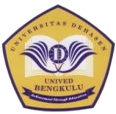AN ANALYSIS ON FIGURATIVE LANGUAGE IN ROBERT FROST’S POETRIES BY ROLAND BARTHES AND JULIA KRISTEVA THEORY
Abstract
Lack of understanding of people about the analysis of poetry and considered analysis is a difficult
thing. Researcher focus on three poems, love, and question; Fire and ice, and stopping word ins
Snowy Evening. This poem is chosen because his poetry work and is Bild by various figurative
language than any other poetry. In addition, the poem also give advice on responsibility and
respect. They are four research questions in this study to discuss:1) the types of figurative language
used in the chosen point 2) the meaning of the select poem. 3) the theme of poetry 4) the
message that can be draw from the poem. The domina figures of speech used in Robert Frost’s
poem is selected? To conduct this research, researcher used the theory of Roland Bathes and
Julia Kristeva with a structural approach that analysis figurative language in Robert Frost poem. 1) the research finds the figurative language used in the select Robert Frost form; such as
symbol, parallelism, climax, personification, metaphor, repetition, inversion, and hyperbole. In
addition, researchers also found the dominant figurative language. The dominant figurative
language the Robert Frost uses in poetry is a symbol. 2) the meaning contained in the poetry of
Robert Esek Hs a certain meaning and purpose to be conveyed to the reader according to what is
going on at that time. 3) Robert Frost’s poetries is Frost who stands at the intersection of 19th century American poetry and modernism. 4) Robert Frost’s poetries message to be conveyed in
the form of how our attitude chooses the way of life.








